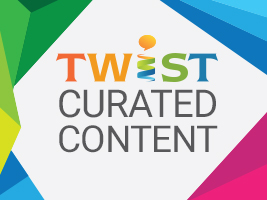Curated Industry Content for the Week of 08/29/16
 Every Monday we curate a number of articles and blog posts that have relevance to members of the eLearning Guild Community, and to the learning and performance field as a whole. Each piece of content that we share includes a brief introduction from the member of the Guild Community sharing why they think the content is important.
Every Monday we curate a number of articles and blog posts that have relevance to members of the eLearning Guild Community, and to the learning and performance field as a whole. Each piece of content that we share includes a brief introduction from the member of the Guild Community sharing why they think the content is important.
Here’s the content for this week:
Your brain on Google Glass: Scientists measure mental workload from smart eyewear by Drexyl University
While many talk about the potential of augmented reality applications, there are fewer people exploring how this technology – a clear screen augmenting the real word in front of our eyes, is handled by the brain. This article explores research being conducted to explore how the brain responds to using augmented reality as compared to doing a similar task using other tools. It’s a fascinating study whose discoveries could have major implications on how these technologies can be used to support learning and performance. -David Kelly
Picture this: Exploring the Internet of Visuals by Jessica Twentyman
Mary Meeker’s annual internet trends report is chock full of valuable information about how the internet is changing the ways we live our daily lives. This article examines on section of the report – the increasing use of visuals to communicate content instead of words – and how that is shaping the future of content. -David Kelly
The Optimal Post is 7 Minutes by Mike Sall
I share this post for a few reasons. The obvious reason is that it presents research regarding the optimal length of content to increase engagement. But I share the post more for the less obvious reasons. The post does a great job of not just sharing conclusions, but also in explaining how the data was collected and analyzed to get to the conclusions. It’s a great example of data analysis in action, described in everyday terms. There are also a number of charts in this post, and the design choices that are shared – as well as the reasoning those choices were made – is a great learning opportunity for those exploring how to use visuals to convey information. -David Kelly
Retooling AI for the workplace by Dan Reich
For many, artificial intelligence is a concept of science fiction. In reality, it’s here today and advancing at rapid pace. Today we have many natural language processing devices (Siri, Alexa, etc) that enable us to simply ask questions or make requests and the AI figures out what we want and responds accordingly. This article explores how these applications work, and examines the opportunities and obstacles they present when put into an organizational environment. -David Kelly
Cognitive Offloading: How the Internet Is Changing the Human Brain by Philip Perry
Technologies like smartphones that are constantly connected to the limitless supply of internet information have radically changed the ways we live our lives. Most of us have experienced that moment where someone asks a question no one knows the answer to and someone else pulls out their phone and says “I’ll Google it”. We live in world where answers to most questions are just a few taps away, and we can document experiences in pictures, video, and other mediums. While there are many advantages to this, we also need to consider the disadvantages. This article looks at both sides of the equation, examining a study that explores how these technologies may be changing the way our brains work. -David Kelly
Will Virtual Reality Solve Your Real-world Problem? by Lisa Minogue-White
There’s a great deal of interest in virtual reality for learning and performance programs. It’s one of the new “shiny objects” that has people’s attention. The problem with shiny objects is that they seem more attractive than they may be in practice. Many organizations have invested in technologies based solely on hype, only to discover after the fact that they didn’t apply to the organization’s context. VR may have some huge possibilities, but you still need to examine if it works for your context before making a commitment. This article explores that need and provides an example of how to vet if VR is the right solution for your organization. -David Kelly
What are you reading?
If you have an article, blog post, or other resource that you think we should consider sharing in a future Curated Industry Content post, please feel free to send a link to the resource to David Kelly along with a few sentences describing why you think the resource is valuable.

Leave a Reply